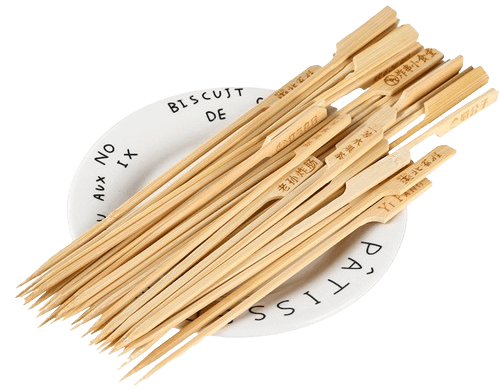Key Takeaways Table
| Key Point | Details |
|---|---|
| Introduction to Chopsticks | Overview of chopsticks as a cultural and practical utensil in various Asian cuisines. |
| Basic Technique | Step-by-step guide to holding chopsticks correctly. |
| Cultural Nuances | Insights into the specific uses and etiquette in Japanese, Korean, and Chinese contexts. |
| Practical Tips | Suggestions for beginners, including adjustments for left-handed users. |
| Advanced Techniques | How to handle different foods effectively with chopsticks. |
| Etiquette and Manners | Comprehensive guide on dos and don’ts while using chopsticks. |
| Link to More Information | For further details, visit Ecostix Global’s Blog. |
I. Introduction
Chopsticks aren’t just tools for eating; they are a bridge to understanding the rich cultural tapestries of Asian cuisines. At Ecostix Global, we not only provide high-quality, sustainable bamboo chopsticks but also strive to enrich your dining experience by blending tradition with modern innovation. Learn the proper techniques, understand the cultural significance, and embrace the eco-conscious lifestyle that chopsticks represent.
II. The Basics of Holding Chopsticks
Learning to use chopsticks correctly is the first step toward appreciating their versatility:
- Step 1: Place the first chopstick so it rests comfortably between your thumb and the base of your fingers.
- Step 2: Position the second chopstick similar to how you would hold a pencil, ensuring it moves independently of the first.
Illustrations can be found in our detailed guide at How to Use Bamboo Chopsticks.
III. Cultural Nuances and Techniques
Each Asian culture has its unique approach to chopsticks:
- Japanese Chopsticks: Often sleek and pointed, perfect for picking up delicate foods like sushi.
- Korean Chopsticks: Typically metal, requiring a different grip and technique, often used for grabbing slippery foods like kimchi.
- Chinese Chopsticks: Longer and thicker, ideal for reaching into communal pots and picking up a variety of dishes.
Explore more about the cultural backgrounds at The Cultural Tapestry of Chinese Chopsticks.
IV. Practical Tips for Beginners
If you are new to chopsticks, here are a few tips:
- Start Simple: Begin with easy-to-pick-up foods like chunks of fruits or vegetables.
- Practice Makes Perfect: Regular practice will improve your dexterity.
- Adjust for Comfort: Left-handed? No problem! Chopsticks can be used effectively with either hand, and we provide tips on our site for making the switch easier.
For a deeper dive into using bamboo chopsticks effectively, visit our page on Maximizing the Lifespan of Bamboo Chopsticks.
V. Advanced Techniques and Challenges
As you become more comfortable with the basic grip and use of chopsticks, it’s time to challenge yourself with more advanced techniques:
- Handling Slippery Foods: Foods like noodles and dumplings can be tricky. Practice by stabilizing your grip and using a gentle scooping motion to secure these items.
- Picking Up Small or Delicate Items: Practice precision by attempting to pick up small items like peas or delicate tofu without squishing them.
For more detailed techniques and challenges, refer to our extensive guide on Enhancing Your Gaming Experience with Innovative Gamer Chopsticks.
VI. Etiquette and Dining Manners
Proper chopstick etiquette is crucial in many Asian cultures and is as important as the technique itself:
- Do Not Point: Pointing with chopsticks at others or objects is considered rude.
- Do Not Spear Food: Use chopsticks to pinch or scoop food, not to stab it.
- Resting Your Chopsticks: When not in use, place them on a chopstick rest or on the side of your plate, not upright in a bowl.
Learn more about chopstick etiquette and how it varies by culture at The Evolution and Etiquette of Chopsticks and Forks.
VII. Making Chopsticks a Part of Your Dining Experience
Chopsticks are not just for traditional Asian meals; they can be integrated into everyday dining to enhance your culinary experience and help the environment by reducing the use of disposable utensils:
- Try Chopsticks with Various Cuisines: Beyond sushi and noodles, use chopsticks to eat salad, stir-fries, or even popcorn.
- Environmental Impact: By opting for reusable bamboo chopsticks, you contribute to reducing waste and supporting sustainable practices.
For more on the environmental benefits and practical use of bamboo chopsticks in everyday life, visit our section on Bamboo Chopsticks Sustainable Practices.
VIII. Conclusion
Mastering the art of using chopsticks is more than learning a new way to eat; it’s about embracing a piece of cultural tradition, enhancing your dining etiquette, and committing to a sustainable lifestyle. With practice and understanding, chopsticks can become an essential part of your dining experience, providing a unique blend of culture, skill, and environmental consciousness.
IX. Additional Resources
For those interested in exploring further, we offer a range of articles and guides on the different aspects of chopsticks use, from the basics to advanced techniques, across various cultures. Visit our Blog for more insights and tips.



